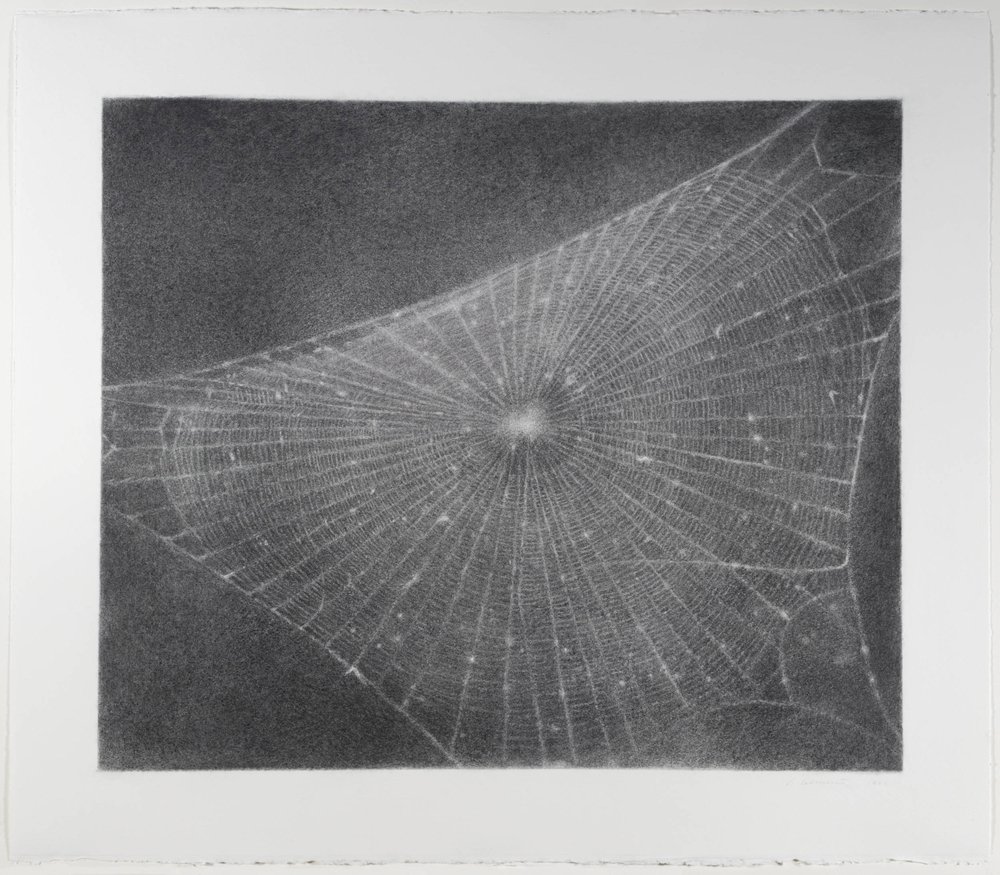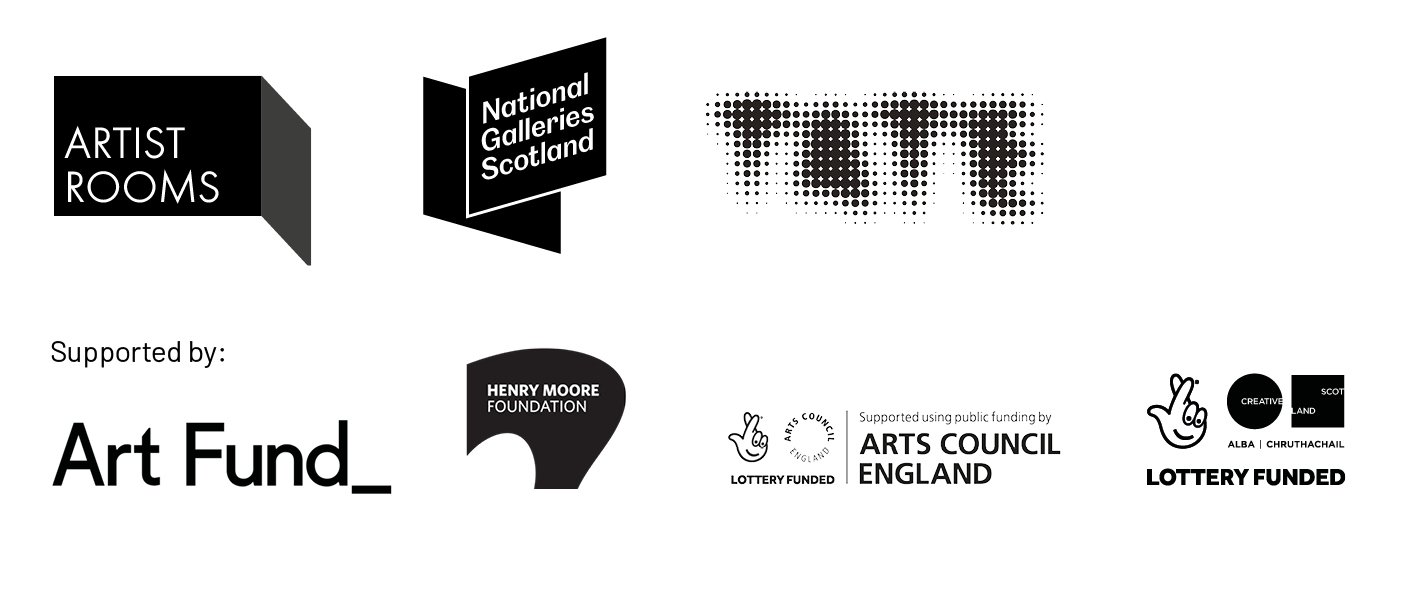Spark your imagination with the Hatton Gallery winter-spring 2024 exhibitions programme
"Our winter-spring programme is a rare opportunity for visitors to encounter three remarkable exhibitions running simultaneously.”

Newcastle University's Hatton Gallery is excited to unveil a captivating lineup of exhibitions for winter-spring 2024, including works by internationally acclaimed Latvian American artist Vija Celmins.
Programme summary:
ARTIST ROOMS Vija Celmins
3 February - 4 May 2024
Celmins (b. 1938) produces mesmerising, exquisitely intricate drawings and prints of natural phenomena. This exhibition, presented in partnership with Tate and National Galleries of Scotland, draws from the remarkable body of Celmins’s work in the ARTIST ROOMS national collection, and features some of her most extraordinary works on paper. Celmins’s highly executed images capture space and time on a two-dimensional surface. Her work is based on photographs of nature – from the infinite expanse of the night sky and the vastness of the sea to the delicate intricacy of a spider’s web.
Ceri Lewis, Senior Curator, ARTIST ROOMS Tate and National Galleries of Scotland, said: “We are delighted to be collaborating with the Hatton Gallery again. Vija Celmins is an extraordinary artist whose mesmerising work combines exceptional craftsmanship with conceptual sophistication, with a career spanning more than five decades. ARTIST ROOMS is all about bringing great art to towns and cities across the UK, free of charge. Through partnerships with local museums and galleries such as the Hatton Gallery, we can create new experiences for audiences, and ensure young people in particular have access to world-class international art.”
Katie Cuddon: A is for Alma
3 February - 4 May 2024
Cuddon (b. 1979) is an artist living and working in Newcastle upon Tyne. A is for Alma is Cuddon’s first solo exhibition in Newcastle for 15 years and presents work created since she gave birth to her daughter in 2018. The works explore the union between mother and child and the emerging dialogue between them.
Cuddon’s clay sculptures resonate with the instinctive experiments and gestures of childhood. She sees clay as a material associated with the early experience of shaping matter as a child, perhaps with Play-Doh or plasticine, materials ‘made to mimic clay’.
The exhibition’s title, A is for Alma, evokes the ABC books read to small children. In the exhibition, Cuddon exhibits for the first time a clay alphabet of hand-modelled letters. These are different from the other sculptures in the exhibition, which embody an intense emotional closeness. The letters are by contrast immediately recognisable as signifying language, an unreliable construct of the ‘adult’ world that threatens to intrude on this intimacy. They have also been bitten and torn to hint at the complex relationship with language that this intrusion stirs up.
The exhibition explores the private realm occupied by a mother and child as somewhere on the edge of the outside world.
Katie Cuddon said: “The relationship you have with a small child is incredibly physical. I felt extreme emotions and confusion: was I one or two people? It’s a really interesting place to think about sculpture from.”
Curating Art MA
About suffering, they were never wrong
9 February - 15 May 2024
MA Curating Art students will present a sequence of three related exhibitions in February, March and April - May. The project partners 12 artists from 12 different countries with 12 historical artworks from the Hatton collection. It reveals how artists across time and space have pictured the pain or suffering of others, by re-examining the history of emotions.
Julie Milne, Chief Curator of Art Galleries at Tyne & Wear Archives & Museums, said: "We are thrilled to announce our second collaboration with ARTIST ROOMS following the Hatton Gallery’s major redevelopment in 2017. We are also excited to work with artist Katie Cuddon on her first solo exhibition in Newcastle in 15 years and to celebrate the talents of Newcastle University MA Curating Art students. Our winter-spring programme is a rare opportunity for visitors to encounter three remarkable exhibitions running simultaneously.”
All exhibitions are free entry, with a suggested donation of £5. For full details of opening times, events, and facilities available, please visit the website: https://hattongallery.org.uk/
About Hatton Gallery
Hatton Gallery has been at the heart of cultural life in the North East since the early 20th century. The gallery has a dynamic and illustrious history, unique in its relationship to the Fine Art department at Newcastle University. The Hatton’s collection includes works from the 14th century to the present day, and the gallery’s only permanent display, Kurt Schwitters’ Merz Barn Wall, was brought to the gallery in 1965 and incorporated into the fabric of the building.
In October 2017, the Hatton underwent a £3.8million redevelopment supported by National Lottery Players through the Heritage Lottery Fund. The redevelopment allowed the Hatton to upgrade exhibition spaces, restore architectural features, conserve Schwitters’ Merz Barn Wall, as well as improve visitor facilities. The Hatton Gallery is managed by Tyne & Wear Archives & Museums on behalf of Newcastle University. More at www.hattongallery.org.uk – follow us on Twitter @HattonGallery and on Facebook/thehatton\
ARTIST ROOMS
ARTIST ROOMS presents the work of international artists in solo exhibitions drawn from a national touring collection jointly owned by Tate and the National Galleries of Scotland. Its programme reaches audiences across the UK and is developed through local partnerships. ARTIST ROOMS gives young people the chance to get involved in creative projects, discover more about art and artists, and learn new skills. Since 2009, some 200 exhibitions have been shown at nearly 100 museum and galleries around the UK, with 50 million visitors. The ARTIST ROOMS programme and collection is managed by Tate and National Galleries of Scotland with the support of Art Fund, Henry Moore Foundation and using public funding by the National Lottery through Arts Council England and Creative Scotland. Its founding collection was established through The d'Offay Donation in 2008 with the assistance of the National Heritage Memorial Fund, Art Fund and the Scottish and British Governments. For more information visit: www.nationalgalleries.org/arti... | www.tate.org.uk/artist-rooms | www.artistrooms.org | #ARTISTROOMS

ART FUND
Art Fund is the national fundraising charity for art. In the past five years alone Art Fund has given £34 million to help museums and galleries acquire works of art for their collections. It also helps museums share their collections with wider audiences by supporting a range of tours and exhibitions, and makes additional grants to support the training and professional development of curators. Art Fund is independently funded, with the core of its income provided by 151,000 members who receive the National Art Pass and enjoy free entry to over 240 museums, galleries and historic places across the UK, as well as 50% off entry to major exhibitions and subscription to Art Quarterly magazine. In addition to grant-giving, Art Fund’s support for museums includes Art Fund Museum of the Year (won by Tate St Ives in 2018) and a range of digital platforms. Find out more about Art Fund and the National Art Pass at www.artfund.org
HENRY MOORE FOUNDATION
The Henry Moore Foundation was founded by the artist and his family in 1977 to encourage public appreciation of the visual arts. Today it supports innovative sculpture projects, devises an imaginative programme of exhibitions and research worldwide, and preserves the legacy of Moore himself: one of the great sculptors of the 20th century, who did so much to bring the art form to a wider audience.
Within the Foundation are the Henry Moore Institute in Leeds and Henry Moore Studios & Gardens in Hertfordshire.
henry-moore.org
ARTS COUNCIL ENGLAND
Arts Council England is the national development agency for creativity and culture. We have set out our strategic vision in Let’s Create that by 2030 we want England to be a country in which the creativity of each of us is valued and given the chance to flourish and where everyone of us has access to a remarkable range of high quality cultural experiences. We invest public money from Government and The National Lottery to help support the sector and to deliver this vision. www.artscouncil.org.uk.
Following the Covid-19 crisis, the Arts Council developed a £160 million Emergency Response Package, with nearly 90% coming from the National Lottery, for organisations and individuals needing support. We are also one of the bodies administering the Government’s unprecedented £1.96 billion Culture Recovery Funds. Find out more at www.artscouncil.org.uk/covid19.
CREATIVE SCOTLAND
Creative Scotland is the public body that supports the arts, screen and creative industries across all parts of Scotland on behalf of everyone who lives, works or visits here. We enable people and organisations to work in and experience the arts, screen and creative industries in Scotland by helping others to develop great ideas and bring them to life. We distribute funding provided by the Scottish Government and the National Lottery. For further information about Creative Scotland please visit www.creativescotland.com. Follow us @creativescots and www.facebook.com/CreativeScotl...
Katie Cuddon
Katie Cuddon is an artist based in Newcastle upon Tyne where she is also a part-time Reader in Fine Art at Newcastle University.
Katie has been making sculptures, mostly with clay, for nearly 20 years. Her work develops expressively and instinctively in a studio practice that explores psychological representations of the human body and the intimate interpenetration of art and life.
Pummelled, kneaded, masticated, clay is sometimes combined with found elements, ready-mades or items that have been created with a material other than clay, and the sculptures are nearly always painted rather than glazed. Fired clay, a material symbolic of time, stretching back towards the distant past and forwards to the future, meets with materials that are ‘of the now’, introducing an element of paradox. Paradox is characteristic of Katie’s work which sits awkwardly between definitions, or, as the American poet Martha Ronk described the work, evokes an “enigmatic and specific” temperament.
Katie studied at Glasgow School of Art and then The Royal College of Art before becoming a Lipman Research Fellow in Ceramic Sculpture at Newcastle University. This was followed by a Sainsbury Scholarship in Sculpture and Drawing at the British School at Rome and the inaugural Ceramics Fellowship at Camden Arts Centre. More recently she was awarded a Leverhulme Research Fellowship to explore the relationship between clay and writing and a Wellcome Trust grant for a project titled Death, Imagination and the Clay Body.



